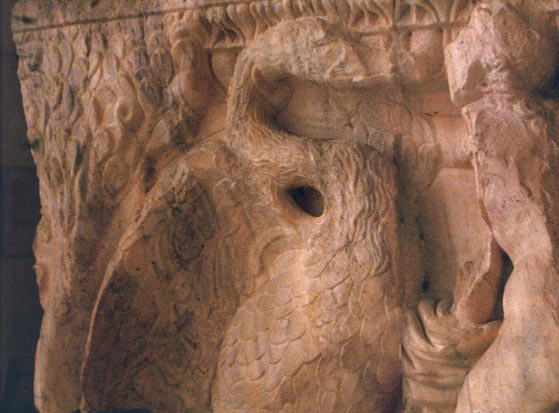Image Details

Photo by Hershel Shanks.
A graphic depiction of Leda and the swan ornaments a stone sarcophagus discovered in the rabbinic burial ground of Beth She’arim, in southwestern Galilee. According to legend, Zeus, the king of the Greek gods, transformed himself into a swan in order to seduce the Spartan queen Leda. As a result, Leda laid two eggs, each containing two children: Castor and Clytemnestra, Pollux and Helen.
The third- or fourth-century C.E. carving attests to the use of Greco-Roman artistic and mythological motifs by a conservative Jewish community. But it also bears evidence of a reaction against this acculturation. For while the figures of Leda and the swan are skillfully rendered, someone has deliberately chipped away both their faces.
An upsurge in iconoclasm (literally, “image destruction”) in the eighth and ninth centuries C.E. led to the defacement or removal of artistic representations of animals and humans in synagogues and other Jewish sites throughout the region. Although the new aesthetic was encouraged by the aniconic culture of the Muslims, who conquered Jerusalem in the seventh century C.E., author Steven Fine concludes that the destruction of images at Jewish holy sites was the work of Jewish, not Muslim, hands.
